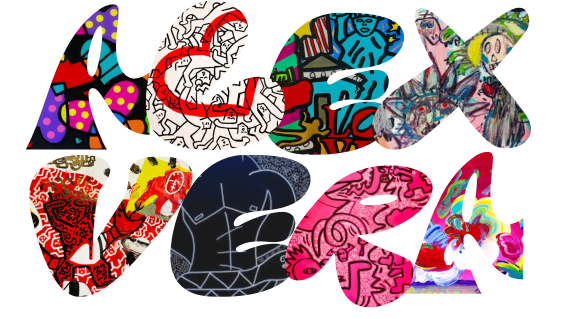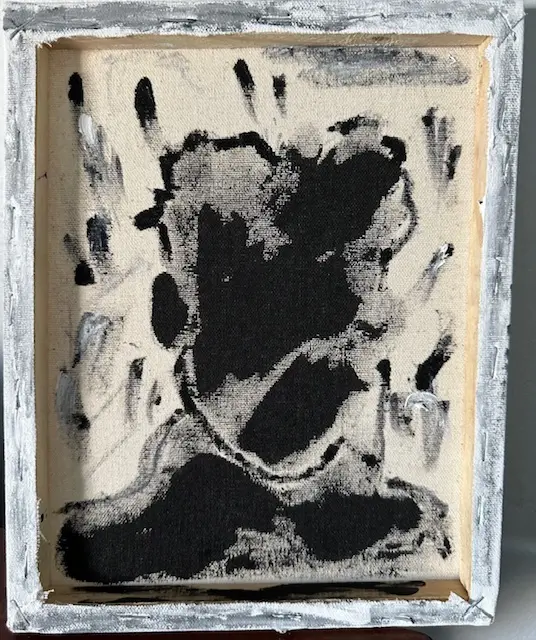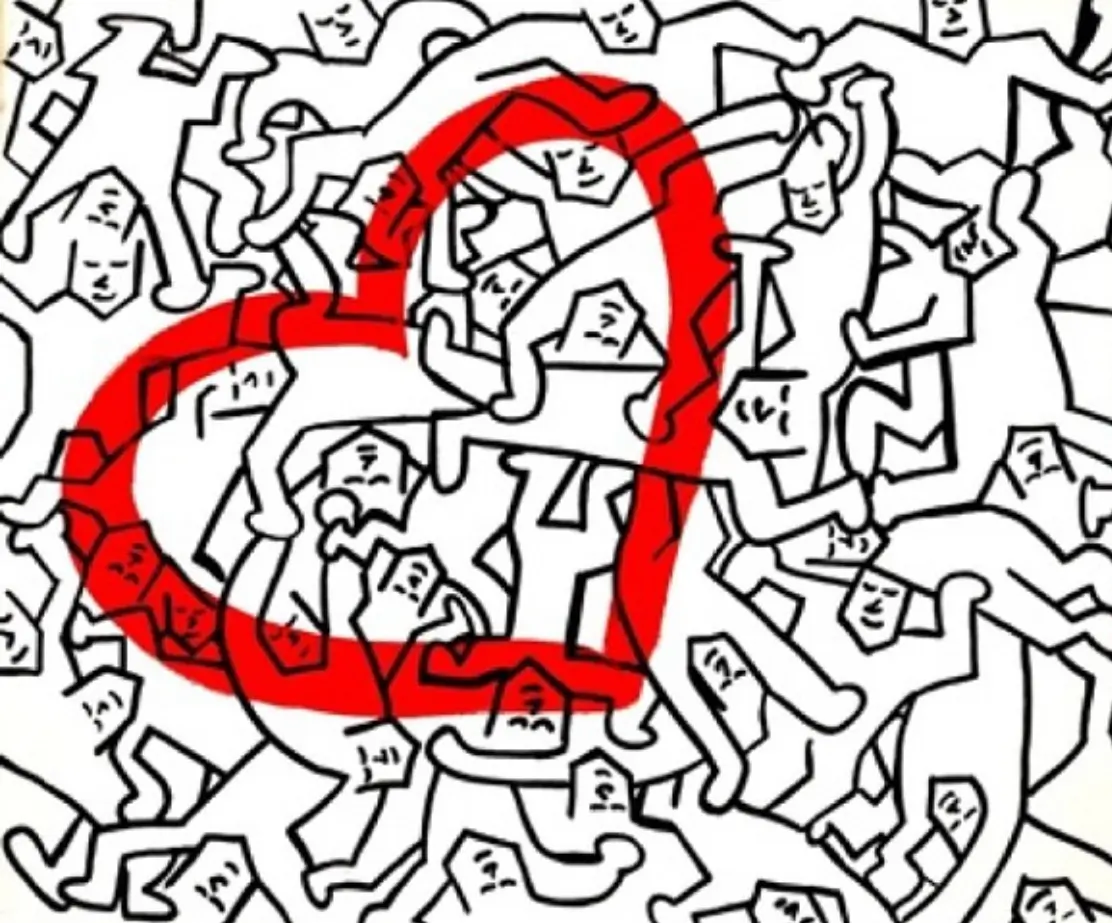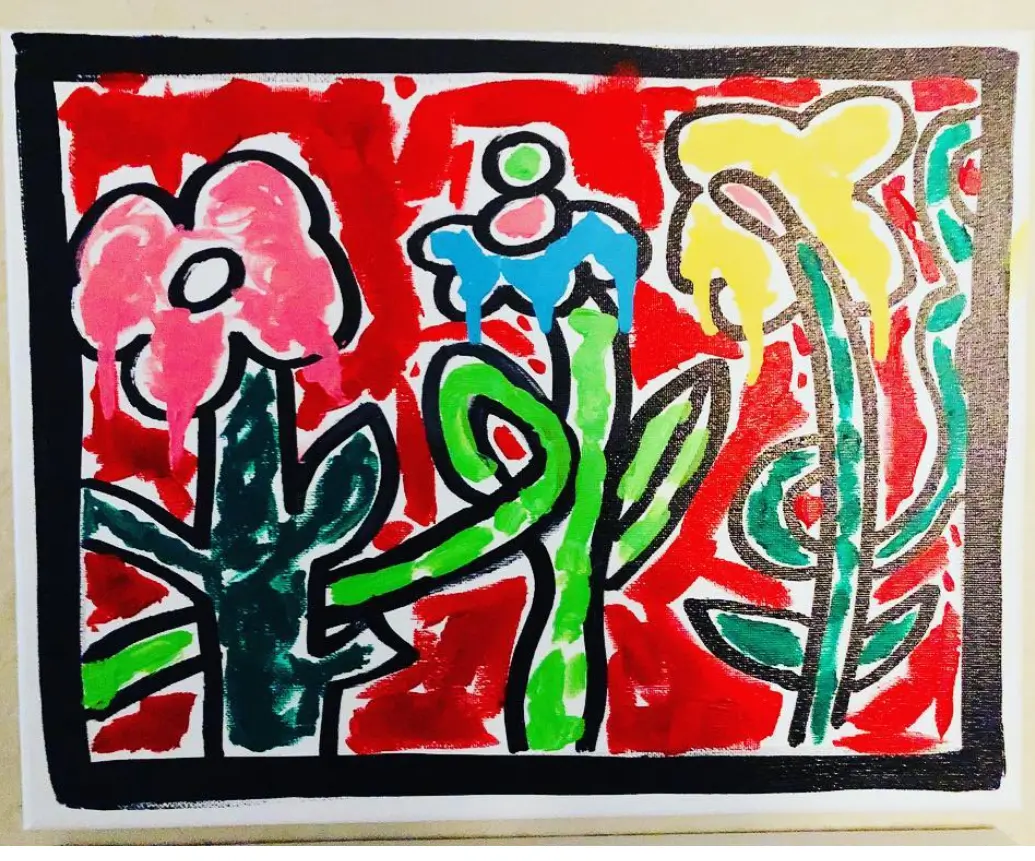What Happened In The Universe of Peter Max?
Have you heard about the ongoing saga regarding The Universe of Peter Max? This iconic artist back in the 60s and 70s, known for his psychedelic paintings that graced the covers of Time magazine and even the White House lawn was diagnosed with dementia in 2012 and that’s where things get messy. He hasn’t been able to paint seriously in ten years, and spends most afternoons curled up in a red velvet lounger in his apartment overlooking the Hudson River.
Despite his decline, some people saw an opportunity. Mr. Max’s estranged son, Adam, and three business associates took over his studio, massively increasing production for a never-ending series of art auctions on cruise ships, even though the artist himself could hardly paint. And things only got weirder from there.
For ten years now, the artist’s family, friends and associates have been trading lurid courtroom allegations of kidnapping, hired goons, attempted murder by Brazil nut, and schemes to wring even more money out of what was already one of the most profitable art franchises in modern times. It’s a surreal situation that’s almost as wild as Mr. Max’s trippy works of art.
But let’s back up a bit. Mr. Max, whose real name is Peter Max Finkelstein, was the son of German Jews who fled Berlin in 1938 and settled in Shanghai. It was there that he discovered the bright primary hues that he’d been deprived of under bleak Nazi rule. Eventually, his family moved to Brooklyn, and by 1968, Mr. Max was a bona fide Pop Art sensation. His DayGlo-inflected posters became wallpaper for the turn on, tune in, drop out generation.
As the hippies who loved his work grew up and became capitalists, so did Mr. Max. He painted a Statue of Liberty series with the backing of Lee Iacocca, the celebrity CEO of Chrysler. He painted official artwork for the Super Bowl, the United States Open tennis tournament, and the World Cup. He splashed his art on cereal boxes, bedsheets, a chunk of the Berlin Wall, and even Dale Earnhardt’s racecar.
But unfortunately, Mr. Max’s decline has been anything but happy. His son and business associates took advantage of his condition to profit off of his art, and the legal battles that have followed have been intense, to say the least. It’s a sad and bizarre turn of events for a man whose art once brought joy to so many people.
After his divorce from his first wife Elizabeth Nance, in 1976, Max built a staircase in his duplex to connect his ex-wife’s apartment to his own, where their two children lived. The staircase in his duplex connected two apartments so that Elizabeth and their two children, Adam Cosmo and Libra Astro, could live downstairs. He then had relationships with Rosie Vela and Tina Louise, among others, before meeting Mary Balkin. They married in 1996.

Despite critics dismissing Mr. Max as more artsy than artist, he had a talent for the lucrative business of art. He expanded his partnership with Park West Gallery, which has sold 10 million works for billions of dollars. The majority of Max’s revenue now comes from boozy auctions held on cruise ships, where Mr. Max’s works are highly sought after. Norwegian even has a Peter Max-themed ship. While Mr. Max’s works were not highly regarded by high-end clientele of Sotheby’s and Christie’s, he had a huge following among the 24 million people who took a cruise each year.
Despite criticism that his art was more commercial than artistic, Max continued to create and sell his work. Some other legal woos that plagued the psychedelic artist occurred in 1997, when he pleaded guilty to hiding $1.1 million in income from the IRS, but he continued to expand his partnership with Park West Gallery, which sells art on cruise ships. Today, Max’s work is more popular on cruise ships than in traditional art markets, with sales generating billions of dollars for Park West Gallery. Although Max relied on assistant painters to stretch canvases and paint backgrounds, he always did the creative work himself. By 2012, Max’s mental health began to decline, and he stopped painting entirely a few years later. Today, his studio is organized legally as ALP Inc., owned by his children and himself (Adam and Libra each own 40 percent, and Peter owns the remainder of 20 percent). So far, his new corporation has defaulted on millions of dollars in bank loans.
It’s been known that Mr. Max’s finest works were not frequently featured in Park West’s auctions. A series of his pieces, known as “Peter’s keepers,” were stored in a warehouse in Lyndhurst, NJ, while lesser versions were marketed on cruise ships, fetching prices as high as $30,000. Over time, some dissatisfied Park West customers alleged that they were misled into believing that they were purchasing one-of-a-kind Max works that would increase in value, only to discover upon returning to land and accessing the internet that similar works were abundantly available. Complaints about works by other artists, including Salvador Dalí, were also raised. More than a dozen individuals filed lawsuits, but Park West either resolved the cases or they were dismissed. (The company’s attorneys claimed that the pieces stored in Mr. Max’s warehouse were not duplicates, and that every Max artwork sold by the gallery was one-of-a-kind. They also maintained that Park West instructed auctioneers to avoid using the word “investment” when discussing art.)
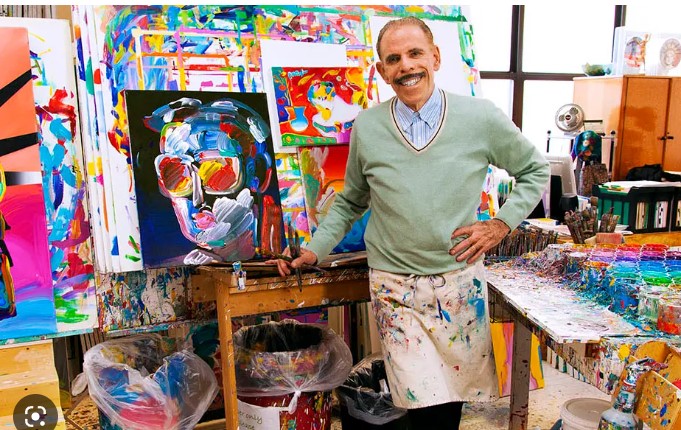
When Max’s cognitive abilities had begun to decline, and he struggled to produce his own artwork – his corporation took over and hired people to paint under the idea they were buying a real Peter Max. Although he would sign books, sketch designs on cocktail napkins for dinner guests, or hold a brush and apply some paint to canvas during public appearances, he had almost entirely ceased painting in the following years. “On his cruise ship art, he signs his name, but he doesn’t paint any of it,” Mr. Bevilacqua remarked. “He’s no longer capable of doing so.”
According to a lawyer representing Lawrence Moskowitz, an insurance agent, and Robert M. Frank, an accountant in Amityville, N.Y., Mr. Max approached them for assistance in reviving his business. This was after Hurricane Sandy hit in 2012 and caused damage to the New Jersey warehouse where ALP stored “Peter’s Keepers.” The two men helped in claiming $300 million in flood insurance, and as of now, they have been able to recoup $48 million. Mr. Moskowitz received a 10 percent fee for his services.
In exchange for his active participation in running the business, Mr. Max offered Mr. Moskowitz a 10 percent stake in ALP, which was half of the artist’s share, leaving Peter with now 10 percent ownership left. Mr. Moskowitz collaborated with Gene Luntz, Mr. Max’s long-serving salesman on his Park West account, and urged Adam Max to become more involved in the business. Although Adam had been ALP’s president since its establishment in 2000, he had shown little interest in the company’s day-to-day operations. However, with his sister Libra living in Los Angeles and actively participating in animal rights activism, Adam started working with Mr. Moskowitz to revitalize ALP. In court, he later testified that his father asked him to take over active management. This leaves Peter Max now with only a 10 percent share in his company!
Park West now hires an expanding cast of artists to mimic Max’s more commercial work, and at one point, the studio employed as many as 18 assistant painters and five people working on etchings. This is why sometimes you will see Peter Max’s original art on eBay for so cheap.
Adam Max took measures to secure the studio, including installing surveillance cameras and metal bar doors, due to concerns about stolen works being listed for sale online. He also monitored his father’s phone conversations and movements, and Mary and Libra Max, who had become increasingly concerned about their father, alleged in separate court proceedings that they were barred from the studio.
Despite his declining mental capacity, Peter Max continued to make public appearances, often requested by Park West to attend V.I.P. sales events in different cities in a single weekend. However, according to his travel companions, he was often confused and exhausted, and even soiled himself on one cruise. Mr. Luntz received his usual 15 percent agent’s commission of what Max made on the road, but privately referred to Max as “Bozo.”
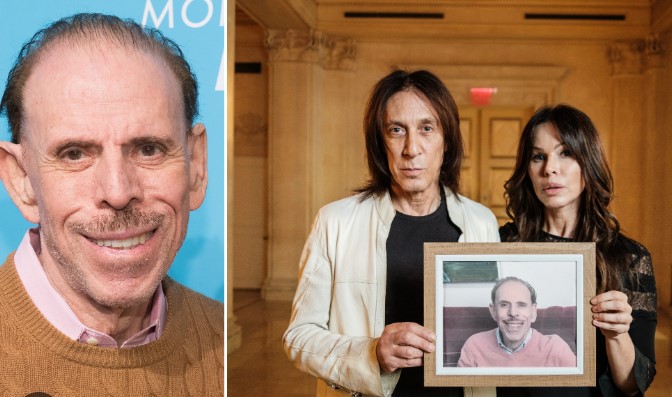
Legal disputes arise
Several collectors of Peter Max’s art began to hear rumors that the artist wasn’t actually creating his own paintings. In 2014, two New York businessmen who had assisted in selling a rendition of Max’s Statue of Liberty series to a collector for $500,000 filed a lawsuit against the artist. They claimed to have overheard Lawrence Moskowitz, one of Max’s associates, say that Max hadn’t painted in years. The suit alleged that a team of “ghost painters” were responsible for creating Max’s pieces and that the artist’s involvement was limited to simply signing his name on the artwork once it was completed.
The case remains ongoing. A lawyer representing Mr. Moskowitz disputed that his client had made the aforementioned statements. He further stated that although Mr. Moskowitz had witnessed Mr. Max painting in recent years, he was unsure if he had produced finished works.
In 2015, Mary Max sought the assistance of the Supreme Court of the State of New York in appointing a guardian to oversee her husband’s business. Following this, she claimed to have been followed by private investigators and threatened by individuals who warned her against interfering in her husband’s affairs.
The accusations against each other became more dramatic. Mary Max alleged that Adam had taken his father into custody and kept his whereabouts a secret from friends and family, effectively “kidnapping” Mr. Max. Adam claimed that he was protecting his father from Mary’s verbal and physical abuse. Several sworn affidavits portrayed Mary as a neglectful and even abusive figure in her husband’s life, a view that the appointed guardian eventually supported.
In a recorded conversation with her driver, which was entered into evidence, Mary inquired about hiring someone to intimidate her husband and damage his painting hand. Additionally, several household employees made accusations of neglect, including Mary withholding food from her husband and putting large Brazil nuts in his smoothies, which could cause him to choke.
Mary’s lawyer, John Markham, stated that his client and Mr. Max “adore each other, and she is very devoted to him.” Not everyone agreed with the depiction of them having an abusive marriage. One court-appointed attorney attested that Mr. Max had spontaneously expressed his love for his wife several times and that removing him from their Riverside Drive home could adversely impact his mental well-being. Despite his deteriorating condition, a judge ordered Mr. Max to return to his wife’s care, with a guardian appointed to oversee both his personal and business affairs. Mr. Max persisted in visiting the studio above Shun Lee to sign works of art, while the Max family feud unfolded. In the meantime, Park West’s maritime auctions continued to inject cash into the studio, and ALP’s net profit for 2018 was over $30 million.
Mr. Luntz’s lawyer, Gregory A. Clarick, claimed that his client acted solely with the approval of Mr. Max and later Adam Max. Mr. Clarick also maintained that Mr. Luntz had no reason to suspect that any artwork ALP was selling was anything other than authentic Peter Max works. Park West is still actively selling Peter Max aboard cruise ships worldwide and promoting the notion that dementia stimulates creativity. During an auction on a Royal Caribbean ship off the coast of the Bahamas, a Park West salesperson, Steven, lauded Mr. Max as America’s painter laureate and urged the writer to buy an artwork called “Umbrella Man” valued at $30,000, which was on prominent display in a narrow corridor between the dining room and the restrooms.

Libra Max, who became more involved in the family business due to her father’s declining health, took action to remove Adam from ALP and become its president and CEO. She terminated the contracts of Mr. Moskowitz and Mr. Frank, and dismissed many of the studio’s assistant painters. Libra intends to restore her father’s vision for the studio by promoting his earlier, more avant-garde work in coastal galleries and museums while distancing the company from the kitschy Marilyn Monroe renderings popular among Park West’s clients.
In a bitter dispute that had escalated into open warfare between Libra and Park West, Libra filed a lawsuit accusing the gallery of improperly taking some 23,000 works from Mr. Max’s collection of “keepers” and paying only a fraction of their true value. The gallery denied the allegations, and even hired a former FBI agent to investigate the matter, concluding that the studio had met every legal standard.
Even before his works were selling on cruise ships, Peter Max had been a great and even avant-garde artist. His love of color, painting, and shapes was evident in every stroke of his brush. And while the fate of his legacy may be in the hands of others, his creative spirit and contributions to the art world will live on.
I can’t help but wonder what kind of ending this story will have. Perhaps one day, the art world will find a way to honor Mr. Max’s true legacy and resolve the bitter disputes that have tarnished his reputation in recent years. For now, all we can do is appreciate the beauty of his art and remember the joy it has brought to so many people.

